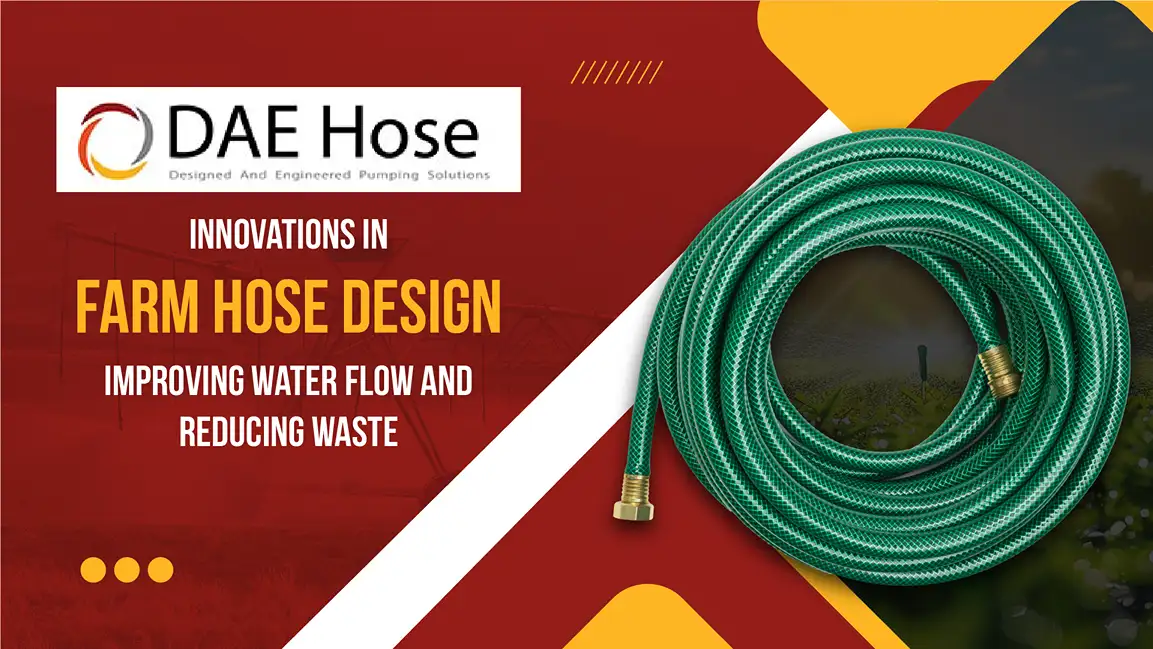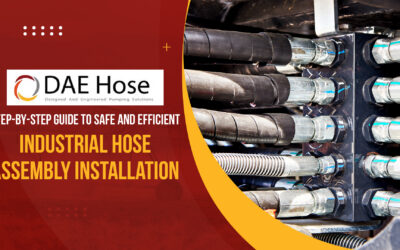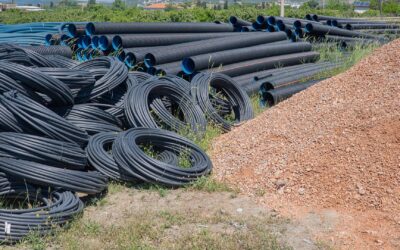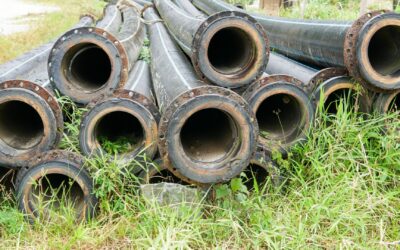Water is a vital resource for agriculture, essential for crop growth, farm productivity, and overall sustainability. Whether on small-scale farms or large commercial operations, efficient irrigation is key to maximizing yields. However, with water scarcity and environmental concerns becoming more urgent, farmers must embrace innovative solutions to optimize water use. In this article, we will delve into how advancements in farm hose design are transforming irrigation systems. These modern farming hoses and agriculture hoses are enhancing water flow, reducing waste, and ultimately boosting farm productivity while contributing to more sustainable farming practices.
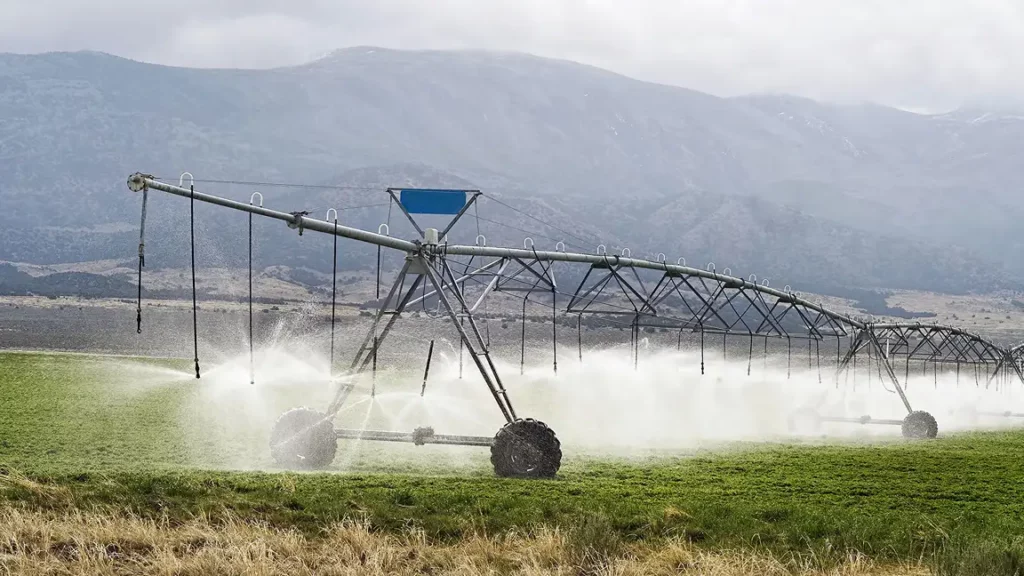
Introduction: The Importance of Efficient Water Management in Agriculture
Water management is vital to successful agriculture, directly impacting crop yields, farm profitability, and environmental sustainability. Traditional irrigation systems, like sprinklers, furrows, and drip systems, have long been used to supply water to crops. Still, they often face challenges such as water wastage, uneven distribution, and frequent breakdowns.
With climate change causing unpredictable weather patterns and straining global water resources, the need for efficient water use in agriculture is more urgent than ever. Farmers must adopt methods that maximize crop growth while conserving water resources.
Farm hoses play a crucial role in irrigation systems. When designed with modern innovations, they help optimize water usage, minimize waste, and enhance irrigation performance. These advancements support precision-driven irrigation, helping farmers maintain crop health while reducing unnecessary water usage. In this article, we’ll explore how farming hoses and agricultural hoses are engineered to address water management challenges, improving both sustainability and productivity in agriculture.
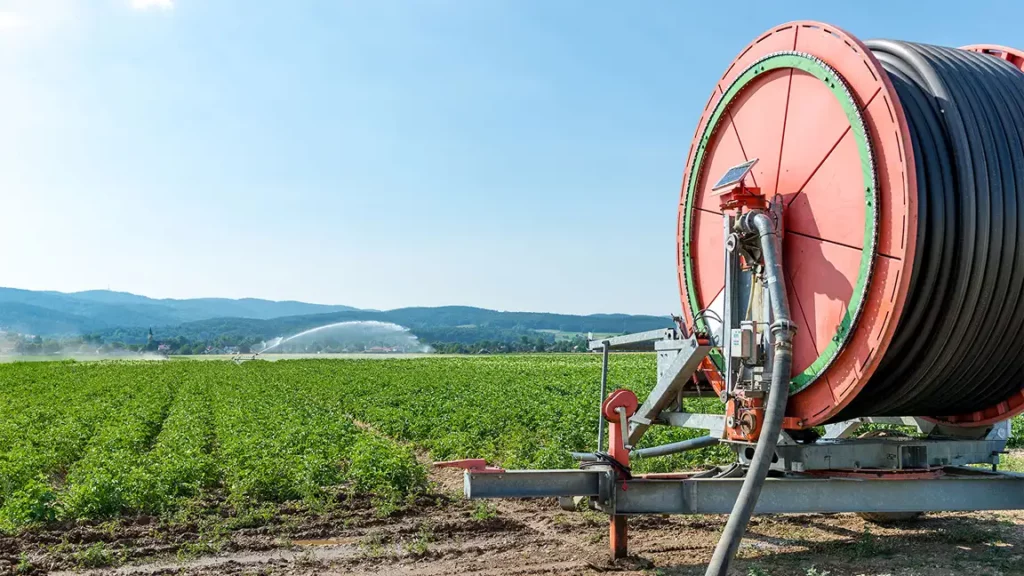
The Challenge of Water Waste in Agriculture
Water Wastage in Traditional Irrigation Systems
Traditional irrigation systems, despite their widespread use, often result in significant water loss. This water wastage can manifest in several ways:
Leaks and Damage: Older farm hoses are prone to wear and tear, leading to small leaks. While these leaks may seem minor at first, they can waste large amounts of water over time. Furthermore, damaged hoses can disrupt the water flow, making it difficult to target specific areas of the field. This inefficiency is a common problem with farming hoses, as age and wear impact their ability to provide consistent water delivery.
Evaporation and Runoff: Open irrigation methods, such as sprinklers, can contribute to significant water loss due to evaporation. As water is sprayed into the air, it evaporates before reaching the plants, and excess water can run off the soil, providing no benefit to the crops. This issue is particularly prevalent in traditional agriculture hoses and open irrigation systems, which often fail to account for such water losses.
Inefficiencies like this are also common in older farm hoses, where water may not be delivered precisely where it is needed, further increasing the risk of evaporation and runoff. Modern farming hoses, however, are designed to minimize these losses by ensuring more targeted water delivery, helping to conserve water and improve irrigation efficiency.
Overwatering: Traditional irrigation systems often don’t factor in real-time soil moisture levels or weather conditions, resulting in overwatering. This can lead to wasted water, soil erosion, nutrient leaching, and a decline in crop health. Additionally, farming hoses that are not optimized for water efficiency exacerbate these issues, contributing to higher water consumption and less effective irrigation.
These inefficiencies not only lead to excessive water use but also raise irrigation costs. Farmers are burdened with high water bills, increased energy consumption, and frequent repairs to damaged agricultural hoses or other irrigation equipment due to inefficient water delivery systems. Inadequate systems can also result in the need for replacement farm hoses and further maintenance, adding to overall operational costs.
Impacts of Water Inefficiency on Farm Productivity and the Environment
Water inefficiency in agriculture doesn’t just impact the farm’s bottom line; it has broader environmental and economic consequences:
- Decreased Crop Yields: Over- or underwatering crops can stunt their growth, reducing yields. Crops depend on a consistent and adequate water supply to thrive. Any disruption in this supply can lead to poor plant health, ultimately affecting crop productivity. Without a stable water flow through efficient systems, such as a well-designed farm hose, the risk of crop damage and lower yields increases significantly.
- Increased Energy Use: Inefficient water systems often require more energy to pump and distribute water, particularly when there are leaks, pressure imbalances, or overuse. This results in higher operational costs for farmers. Furthermore, the additional energy consumption contributes to a larger carbon footprint, exacerbating environmental concerns related to agriculture’s energy consumption.
- Environmental Strain: Wasting water in irrigation systems not only leads to higher costs but also places unnecessary strain on already limited water resources. With water scarcity becoming an ever-growing global issue, farmers are increasingly under pressure to adopt water-conserving practices. In this context, improving farm hose design and efficiency, alongside advancements in farming hose and agriculture hoses, can play a pivotal role in reducing water waste, minimizing runoff, and ensuring that irrigation practices align with sustainability goals.
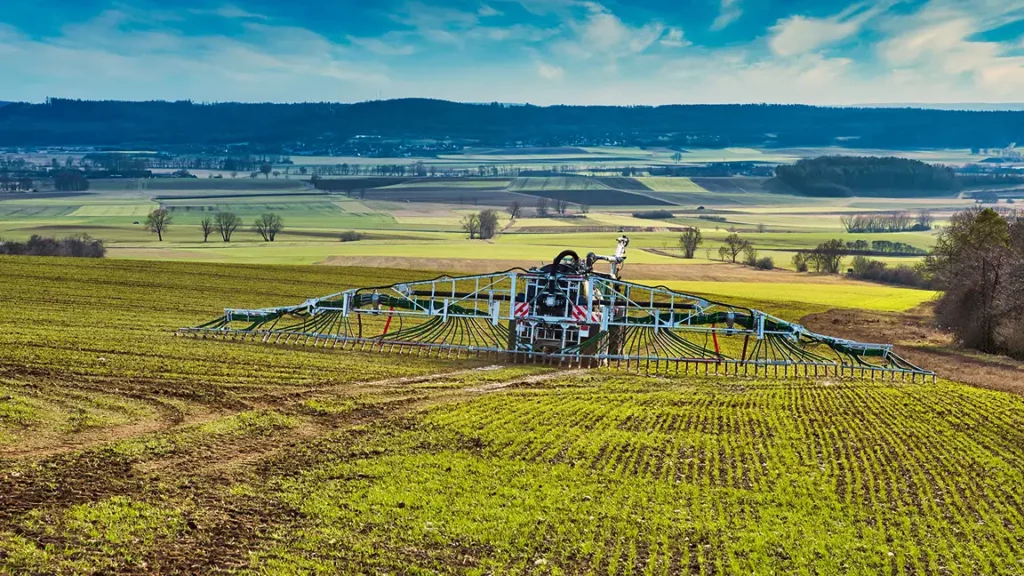
Innovations in Farm Hose Design
New Materials and Technologies
Modern farm hoses are being built with innovative materials and technologies that help tackle the challenges of water waste and inefficiency. The days of using basic rubber hoses with limited functionality are behind us. Today’s farming hose designs offer greater durability, flexibility, and, most importantly, water efficiency.
- High-Density Polyethylene (HDPE) and Thermoplastic Elastomers: These materials are widely used in modern farm hose designs for their exceptional durability and flexibility. HDPE, for example, is resistant to UV rays, moisture, and harsh weather conditions, making it ideal for farming environments. Thermoplastic elastomers combine the properties of rubber and plastic, providing a strong, leak-resistant agriculture hose that can withstand high pressures and extreme temperatures.
- Reinforced Construction: Many modern farm hoses are designed with reinforced layers that add strength and kink resistance. These hoses can handle higher pressures without bursting or losing flow, ensuring that the water gets to the crops effectively. Reinforced farming hoses also have better resistance to physical damage, extending their lifespan.
- Flexible and Lightweight Designs: Unlike older hoses that were cumbersome and difficult to maneuver, modern hoses are designed to be lightweight and flexible. This makes it easier for farmers to move hoses across their fields without straining their backs, reducing physical labor and increasing efficiency.
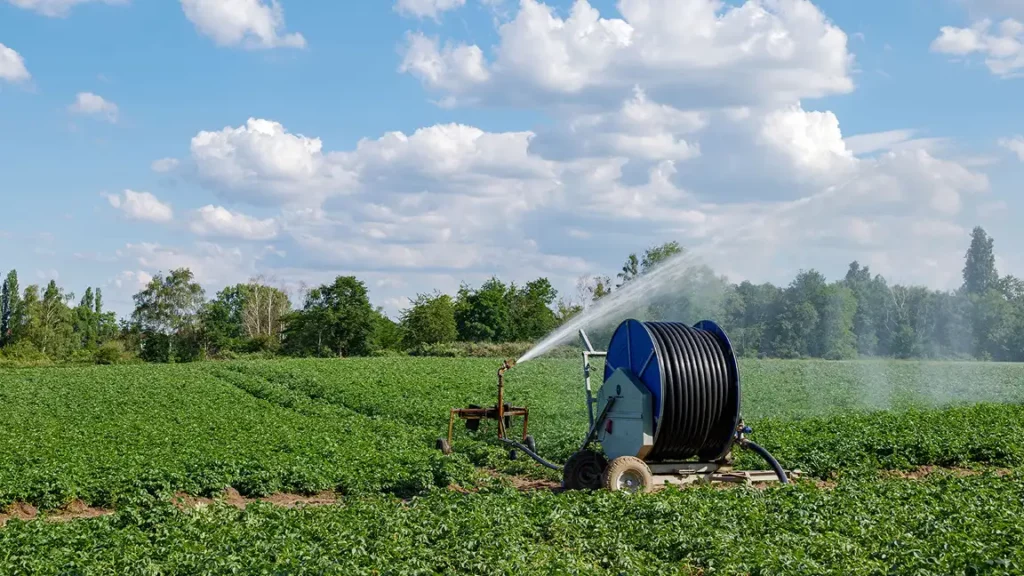
Features That Improve Water Flow and Reduce Leakage
Recent advancements in hose design have significantly improved water flow and reduced leakage. Here are some of the key features that make modern hoses more efficient:
Leak-Proof Fittings: One of the most common issues with older irrigation systems was water leakage from hose connections. Today’s agricultural hoses are equipped with high-quality, leak-proof fittings that prevent water from escaping at connection points, ensuring more efficient water delivery and minimizing waste.
Pressure Regulation: Modern farming hose designs now include pressure regulation technology. This allows for consistent water flow regardless of fluctuations in water pressure, ensuring that water is evenly distributed across the field. By maintaining steady pressure, farmers can achieve more precise irrigation, optimizing water use. Additionally, the inclusion of pressure regulation in farm hoses helps reduce water wastage, ensuring that each drop counts for crop health.
Kink Resistance: Traditional hoses were often prone to kinking, which disrupted water flow and required frequent adjustments. Modern farm hoses, however, are designed to be kink-resistant, ensuring a smooth, uninterrupted flow of water that improves irrigation efficiency.
These advancements in agricultural hose technology significantly enhance the overall effectiveness of irrigation systems. They allow for more precise water delivery while reducing waste and improving crop health. The combination of leak-proof fittings, pressure regulation, and kink resistance makes the modern farming hose an essential tool for efficient and sustainable farming.
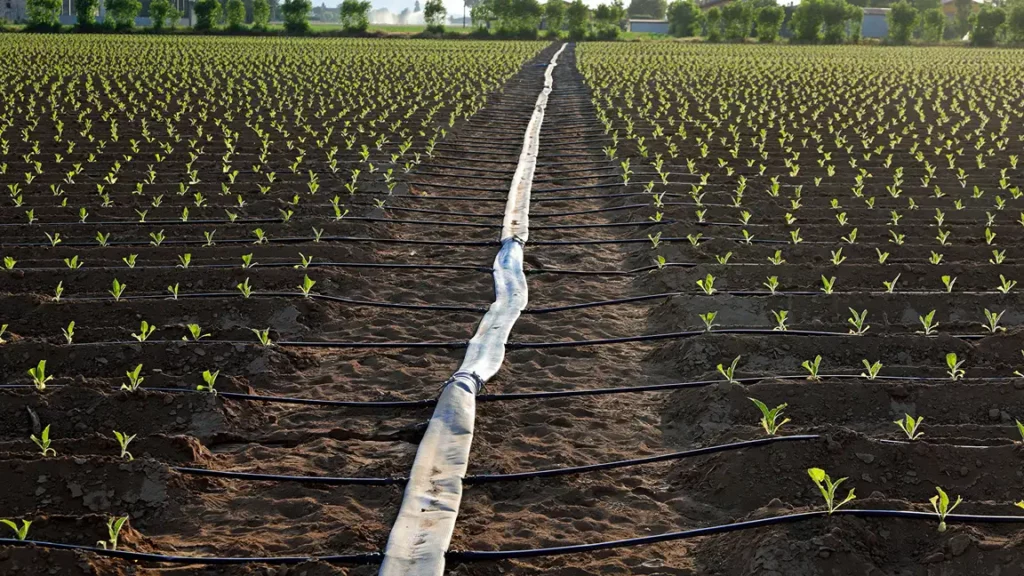
How Improved Water Flow Enhances Farm Productivity
The Importance of Consistent Water Flow in Crop Yields
In agriculture, water is not just an input—it is the lifeblood of crop production. Consistent and adequate water flow is crucial for crop growth, especially in dry conditions. If crops receive too little water, they can become stressed and vulnerable to disease. On the other hand, too much water can suffocate plant roots and cause disease or root rot.
Improved water flow provided by modern hoses helps to maintain a steady supply of water to crops, which is essential for optimizing growth conditions. Whether it’s through the use of pressure regulation technology or smart irrigation systems, these hoses ensure that crops receive just the right amount of water at the right time. Modern agriculture hoses and farming hoses are designed to offer precise control over water delivery, reducing the risk of overwatering or underwatering. The use of efficient farm hoses ensures that each crop receives the exact amount of water needed to thrive, boosting overall farm productivity.
Benefits of Better Water Distribution in the Irrigation Process
Water distribution is another critical aspect of irrigation. Uneven water delivery can result in areas of over-watering and under-watering, both of which can reduce crop yields. For instance, dry patches may not receive enough water, leading to poor plant health, while wet areas could suffer from root rot.
Modern farm hoses, especially those equipped with advanced features such as pressure regulation and even distribution mechanisms, ensure that water is applied evenly across the entire field. This leads to healthier crops, more uniform growth, and better yields.
Reducing Water Waste with Smart Hose Technology
Introduction of Smart Hoses with Sensors and Automatic Control
The introduction of smart hose technology is transforming the way water is delivered to crops. Smart farm hoses are equipped with advanced sensors and automation systems that enable them to adapt to changing conditions. These sensors can detect soil moisture levels, weather conditions, and even the time of day to determine exactly how much water needs to be applied.
- Soil Moisture sensors measure soil moisture levels and send real-time data to the irrigation system. Based on this information, the farming hose can adjust its water flow to ensure that the crops receive the right amount of moisture without overwatering.
- Weather-Responsive Irrigation: Smart agriculture hoses can also consider real-time weather forecasts. If rain is expected, the hose can reduce or halt water delivery to avoid wasting water on a wet field.
How These Hoses Optimize Water Usage and Minimize Waste
Smart farm hoses can dramatically reduce water waste by automating the water delivery process and using data to make real-time decisions. Overwatering is minimized, and farmers only use water when it’s needed. This not only helps conserve water but also reduces energy consumption, as less power is required to pump water through the system.
Additionally, smart farming hoses can detect leaks and malfunctions early, alerting farmers to any issues before they become serious problems. This proactive approach to irrigation helps reduce maintenance costs and keeps systems running smoothly.
Future Trends in Agriculture Hose Design
Emerging Trends Like Self-Repairing Hoses and Biodegradable Materials
The future of farm hose design is exciting, with a focus on sustainability and further efficiency improvements. Self-repairing hoses, which can seal small tears or punctures without human intervention, are a promising development. These hoses can extend the life of irrigation systems and reduce the need for frequent replacements, saving farmers time and money.
Biodegradable materials are also being explored as a way to reduce the environmental impact of farm hoses. Traditional hoses are often made from plastics that do not degrade easily, contributing to landfill waste. The use of eco-friendly materials in hose production could significantly reduce the environmental footprint of farming equipment.
The Potential of AI and IoT in Farm Hose Technology
The integration of Artificial Intelligence (AI) and the Internet of Things (IoT) is likely the next frontier in agricultural hose design. AI can analyze large amounts of data, from weather patterns to crop needs, and optimize water delivery based on this information. IoT devices will allow farmers to monitor and control their irrigation systems remotely, ensuring that they are always operating at peak efficiency. With these technologies, modern farm hoses can become smarter, automatically adjusting water flow to match real-time conditions, improving both water conservation and crop yields.
Conclusion: A Sustainable Future for Agriculture
Innovations in farm hose design are transforming agriculture. From advanced materials that enhance durability to smart technology that reduces water waste, these advancements help farmers use water more efficiently and sustainably. The result is a more productive and environmentally friendly farming process that benefits both farmers and the planet.
As we move forward, adopting these new technologies is essential for farmers who wish to remain competitive and sustainable. Investing in modern farm hose solutions offers significant benefits, including better water management, higher crop yields, and reduced costs. Embracing these innovations will lead to a more sustainable and water-efficient future for agriculture.

